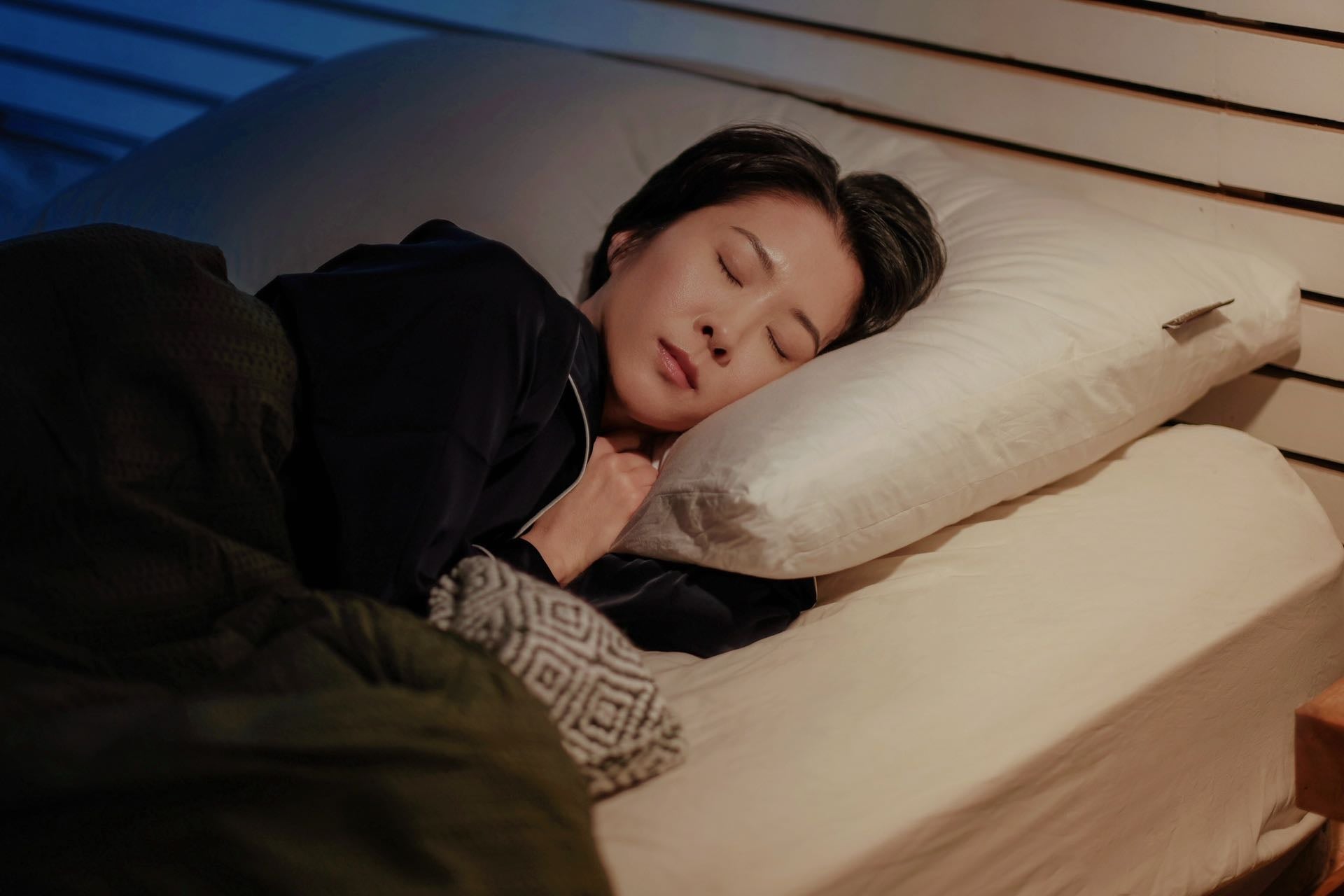Choosing the Right Pillow for Your Sleeping Position
One pillow does not fit all – the best pillow for you depends heavily on your sleeping position. Using the wrong pillow can leave you with a stiff neck or sore shoulders. To maintain neutral spine alignment and sleep comfortably, you should match your pillow’s firmness and loft (height) to whether you sleep on your side, back, stomach, or a combination of positions. Below, we break down what to look for in a pillow for each sleep style.
Side Sleepers
If you sleep on your side, you’ll generally need a firmer, higher-loft pillow to fill the gap between your shoulder and neck. This keeps your head level with your spine. A pillow that’s too thin will let your head droop; too thick will push it up, either way straining your neck. Experts recommend side sleepers use a firm pillow of medium to high loft that supports the cervical spine in neutral alignment. In practice, that might mean a memory foam or latex pillow, or a plump down-alternative pillow that doesn’t compress too much. Additionally, consider a second pillow between your knees – this trick can keep your lower spine aligned and prevent hip discomfort. The combination of a supportive head pillow and a knee pillow helps many side sleepers wake up without aches.
Back Sleepers
Back sleepers typically do best with a medium-firm pillow of medium loft. Your pillow should elevate your head just enough to maintain the natural curve of your neck without pushing your head forward. A common guideline is about 3–5 inches of thickness for back-sleeper pillows. Memory foam and buckwheat pillows are popular among back sleepers for their balance of support and contouring. Many back sleepers also find cervical contour pillows (with a raised neck support area) comfortable for cradling the neck. If you have broad shoulders or a larger frame, a higher loft or even using a rolled towel for extra support might be necessary to keep your head and neck aligned. And here’s a pro tip: placing a thin pillow under your knees can ease pressure on your lower back, promoting a natural spine position from your neck all the way down.
Stomach Sleepers
Sleeping on your stomach is generally the most taxing position for your neck, so if this is your habit, pillow choice is crucial. Stomach sleepers need a very soft, thin pillow – or in some cases, no pillow under the head at all – to prevent the neck from arching backward excessively A puffy pillow will tilt your head up and compress your spine. Instead, opt for a pillow under 3 inches thick or a specialized stomach-sleeper pillow that is nearly flat. Down or polyester-fill pillows can work well since they squish down easily. You might also try sleeping with a pillow under your pelvis to help keep your lower back from arching and to further align your spine. Note that many stomach sleepers suffer neck pain; experts often suggest gradually training yourself to transition to side or back sleeping if possible, as those positions are more ergonomic for the neck. At the very least, using the thinnest pillow you can and keeping your spine level will mitigate strain in this position.
Combination Sleepers
If you tend to shift positions throughout the night, you’re a combination sleeper. The challenge here is to find a pillow that adapts to multiple positions. A medium-loft, medium-firm pillow is a good compromise – it can support your side-sleeping needs reasonably well while not being too lofty for back or stomach positions. Adjustable-fill pillows are also excellent for combination sleepers. These pillows allow you to add or remove filling (such as shredded foam) to customize the height. You can tweak the fill until the pillow feels comfortable for the range of positions you cycle through. Combination sleepers might also benefit from having more than one pillow on hand – for example, a primary pillow that suits side sleeping and an extra thin pillow you can pull in when you roll onto your stomach. Ultimately, if you’re a restless sleeper, aim for a pillow with balanced support that isn’t overly firm or extremely lofty, so it can “work” in different orientations as you move.
An excellent choice for comfort is the Donama Series Cervical Pillow by DonaHona. The elevated sides cushion your shoulders, while the contoured dip in the center helps cradle your head in a neutral position. No matter your sleep style, the goal is to keep your head, neck, and spine aligned as you rest. A side sleeper will usually need a firmer, taller pillow than a back sleeper, and stomach sleepers require the thinnest of all. Pay attention to how you feel in the mornings – if you’re waking up with neck or shoulder pain, your pillow might be the culprit. Don’t hesitate to experiment with different pillow fills and lofts (or even specialty pillows) until you find the one that gives you comfortable, pain-free sleep in your preferred position. After all, a supportive pillow is an investment in your health and well-being every night.










Leave a comment
This site is protected by hCaptcha and the hCaptcha Privacy Policy and Terms of Service apply.